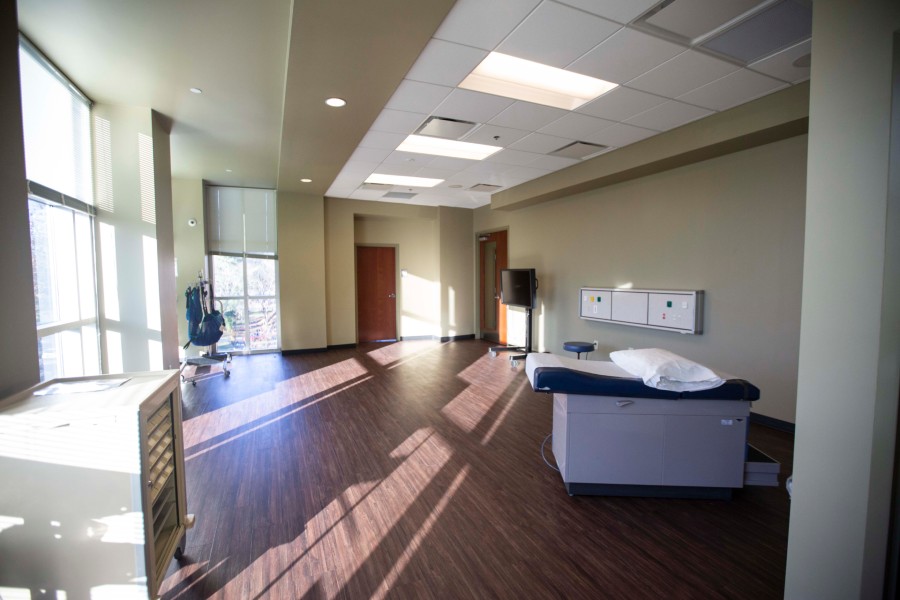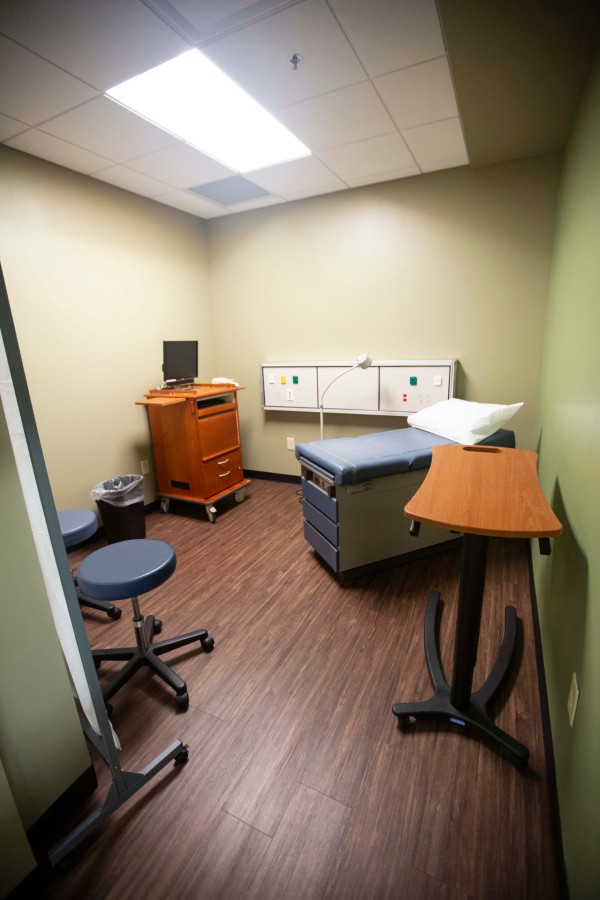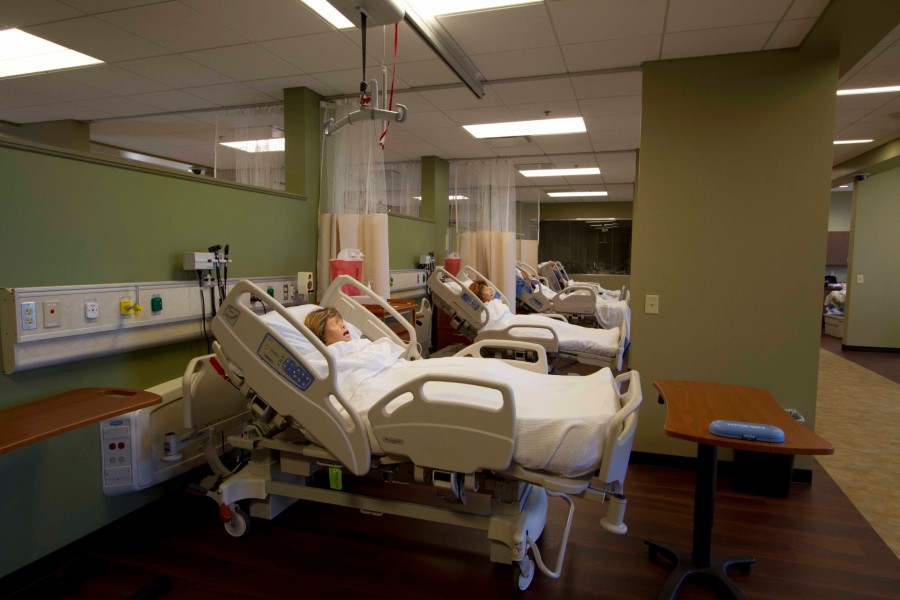Significant investment in simulation lab expands teaching opportunities
The Health Simulation Lab received five new patient simulators and hospital beds, increasing its capacity by 35 percent.
Janel Shoun-Smith | 615.966.7078 |

A summer renovation of the lab created two private treatment areas allowing more types of treatments to be taught to students at the same time.
The Health Simulation Lab received five new patient simulators and hospital beds this past fall, increasing its capacity to host students for training by 35 percent, said Dr. Roger Davis, vice provost for health affairs.

This room allows faculty to demonstrate specialized simulations that require more privacy.
A summer renovation of the lab created two private treatment areas and bisected the lab down the middle, allowing two classes to receive instruction at the same time without noise pollution, Davis said. The private areas also allow more types of treatments to be taught to students.
“These renovations were necessary due to the growth in the health science programs overall, including the new physician assistant studies program that has added 76 students in the past two years,” said Davis. “A large portion of our curriculum is based on simulations.”
A previous common area located adjacent to the lab was transformed into two treatment rooms that model a traditional intensive care unit. These two rooms allow faculty to demonstrate specialized simulations that require more privacy, Davis said.
The new design of the lab and additional simulators, bringing the total to 24, will allow for additional enrollment in the PA, nursing and pharmacy programs, he said.
The Health Simulation Lab was constructed in 2012 in the Nursing and Health Sciences Center and currently houses two cardiopulmonary mannequins and three premature baby mannequins as well as simulators of adult patients.

The new design of the lab and additional simulators, bringing the total to 24, will allow for additional enrollment in the PA, nursing and pharmacy programs.